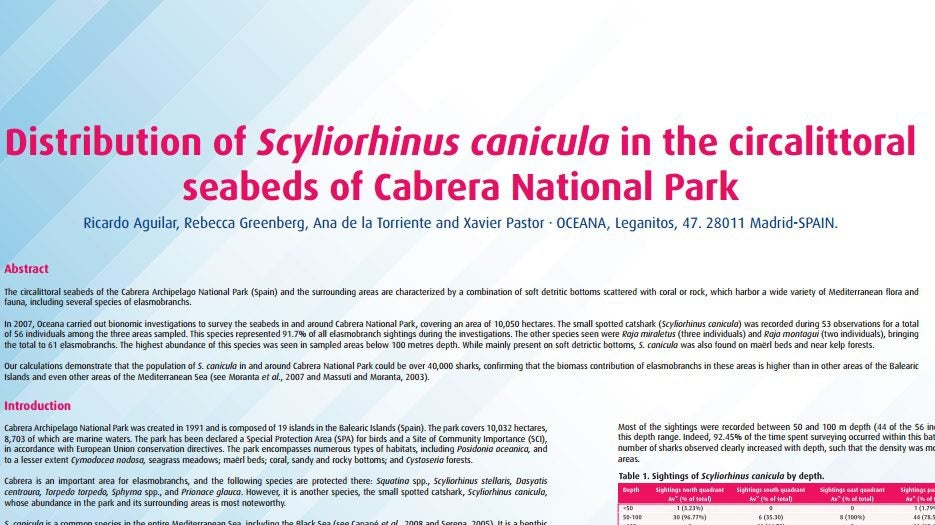Report | junio 12, 2015
Distribution of Scyliorhinus canicula in the circalittoral seabeds of Cabrera National Park

The circalittoral seabeds of the Cabrera Archipelago National Park (Spain) and the surrounding areas are characterized by a combination of soft detritic bottoms scattered with coral or rock, which harbor a wide variety of Mediterranean flora and fauna, including several species of elasmobranchs.
In 2007, Oceana carried out bionomic investigations to survey the seabeds in and around Cabrera National Park, covering an area of 10,050 hectares. The small spotted catshark (Scyliorhinus canicula) was recorded during 53 observations for a total of 56 individuals among the three areas sampled. This species represented 91.7% of all elasmobranch sightings during the investigations. The other species seen were Raja miraletus (three individuals) and Raja montagui (two individuals), bringing the total to 61 elasmobranchs. The highest abundance of this species was seen in sampled areas below 100 metres depth. While mainly present on soft detrictic bottoms, S. canicula was also found on maërl beds and near kelp forests.
Our calculations demonstrate that the population of S. canicula in and around Cabrera National Park could be over 40,000 sharks, confirming that the biomass contribution of elasmobranchs in these areas is higher than in other areas of the Balearic Islands and even other areas of the Mediterranean Sea (see Moranta et al., 2007 and Massutí and Moranta, 2003).

